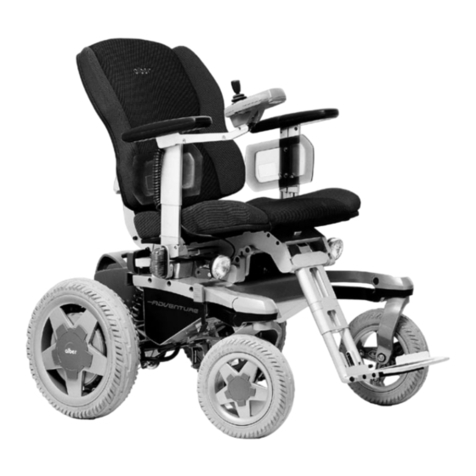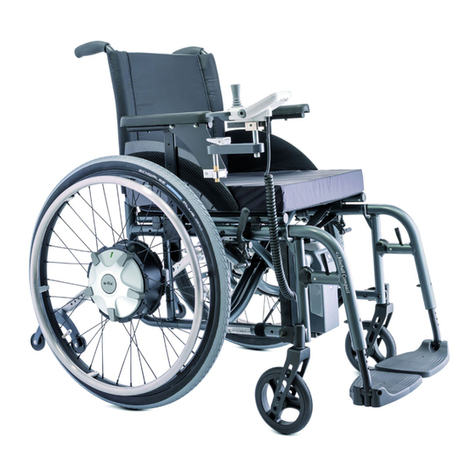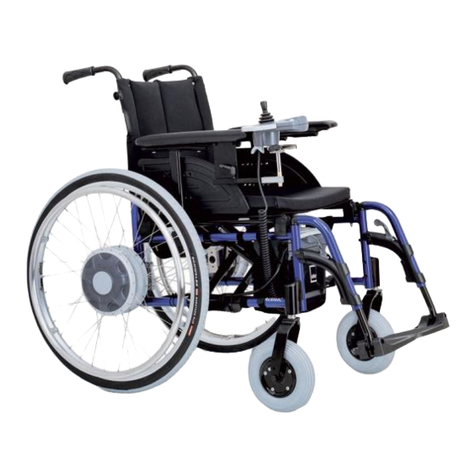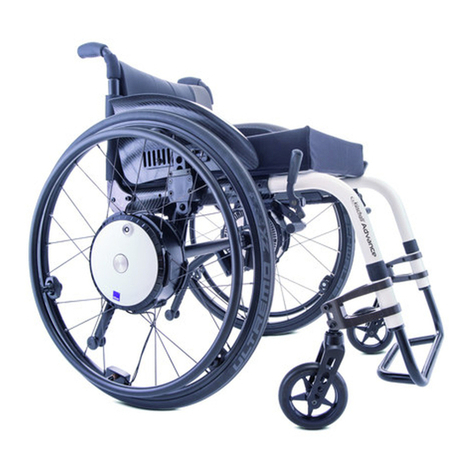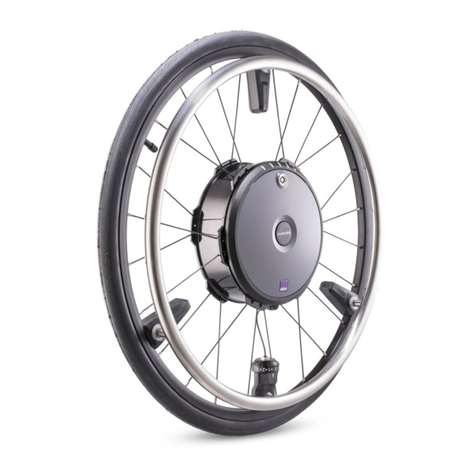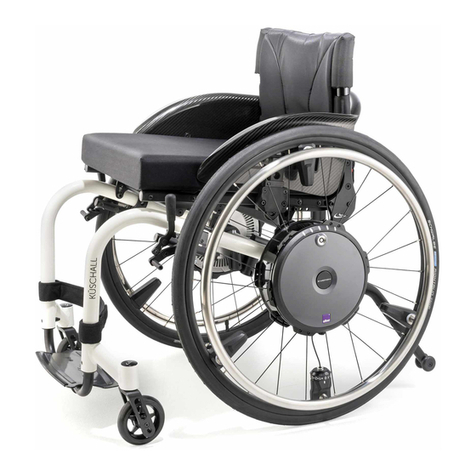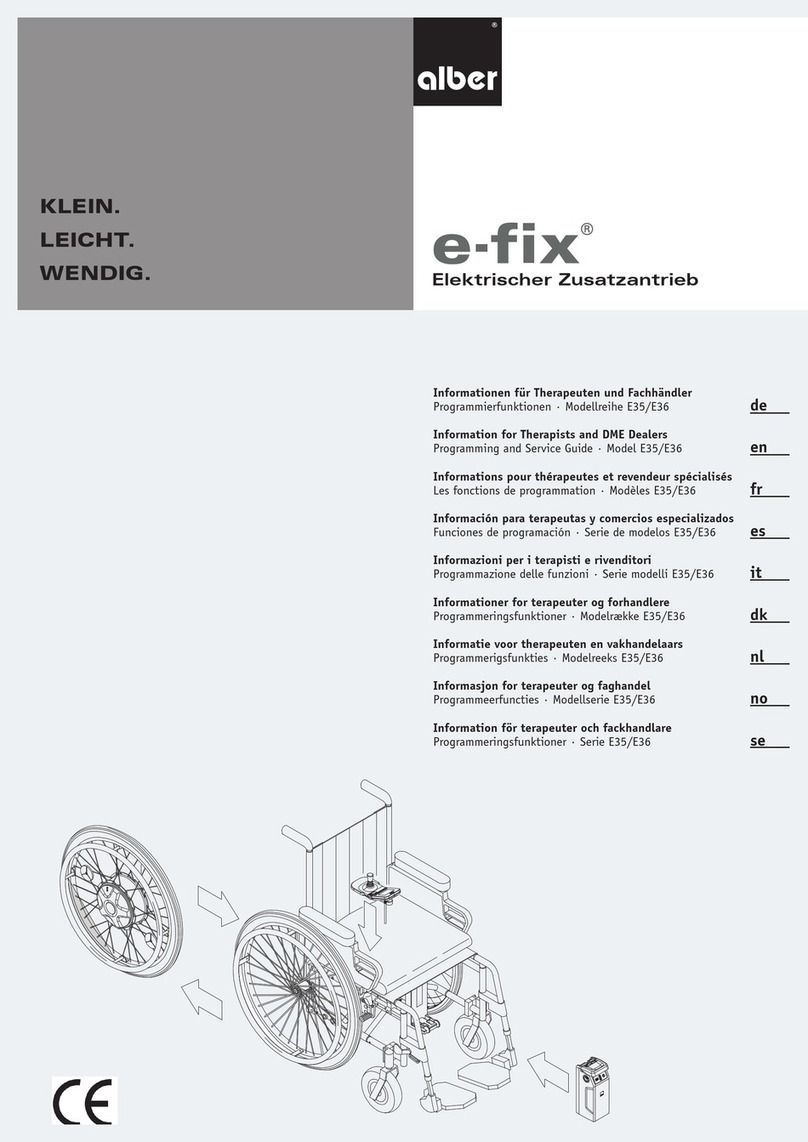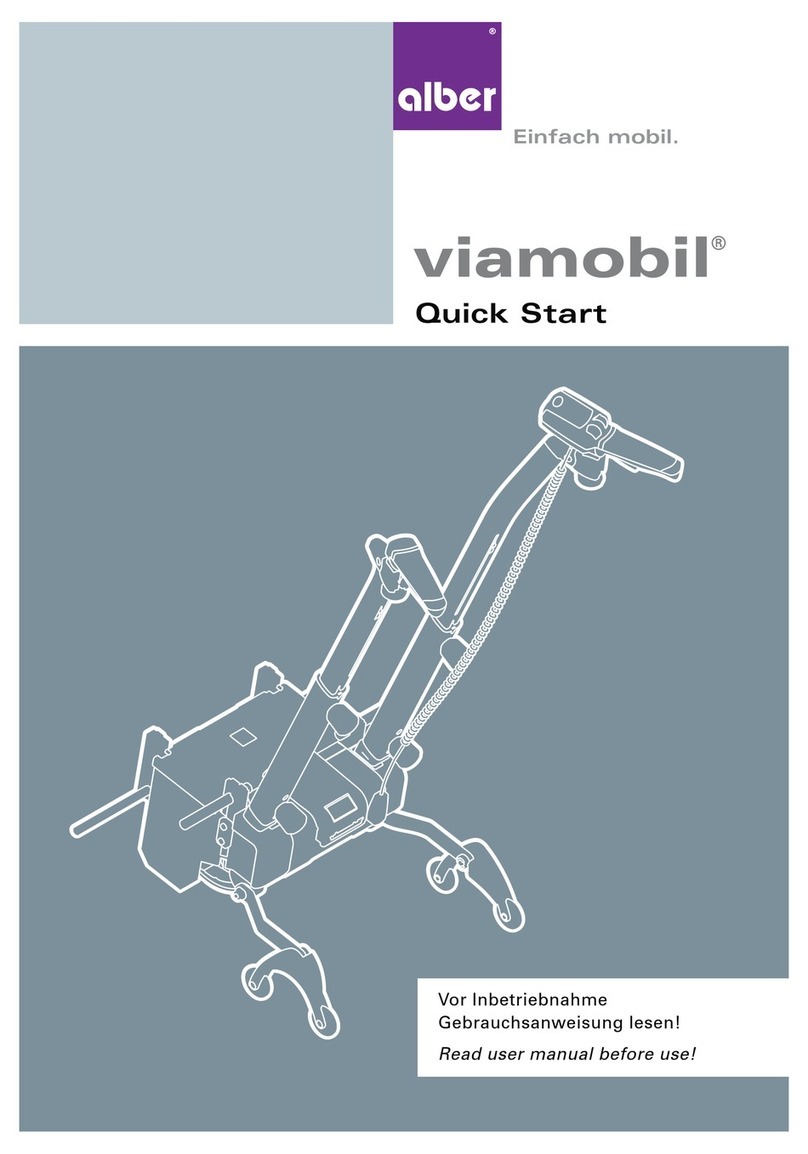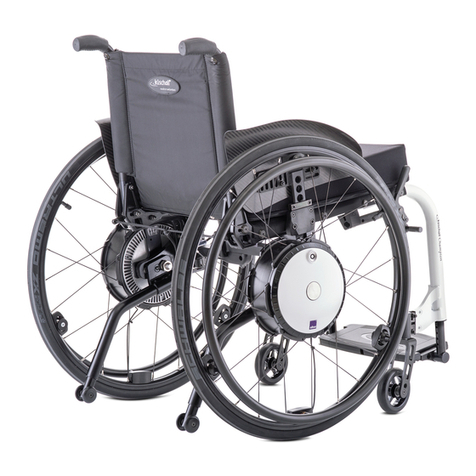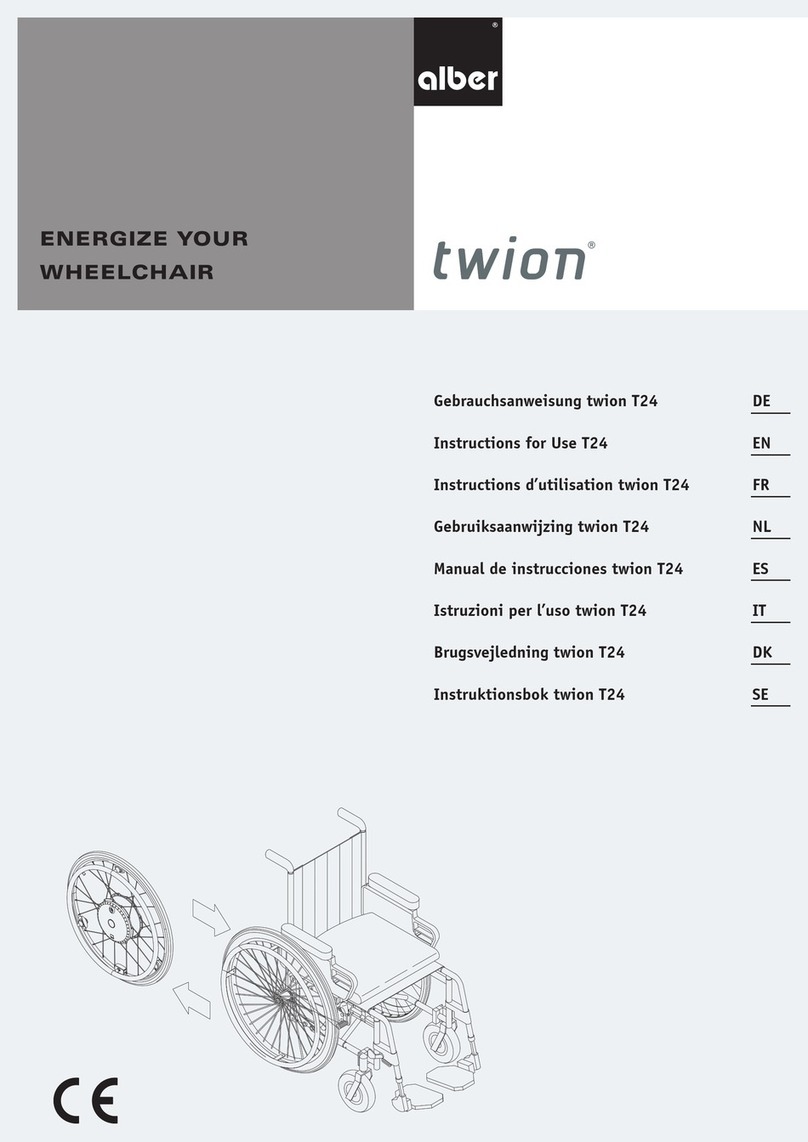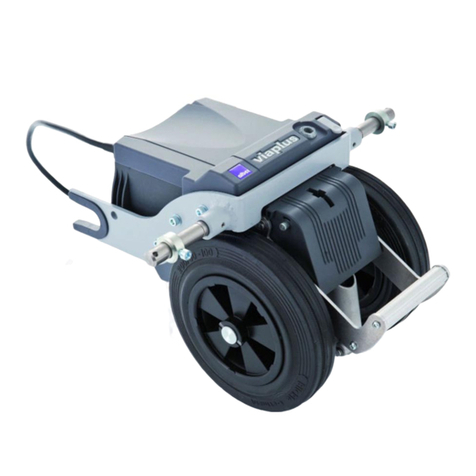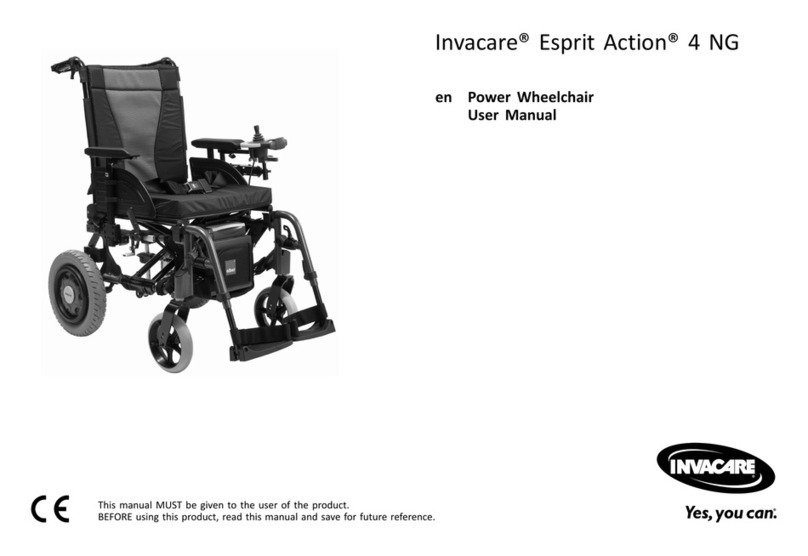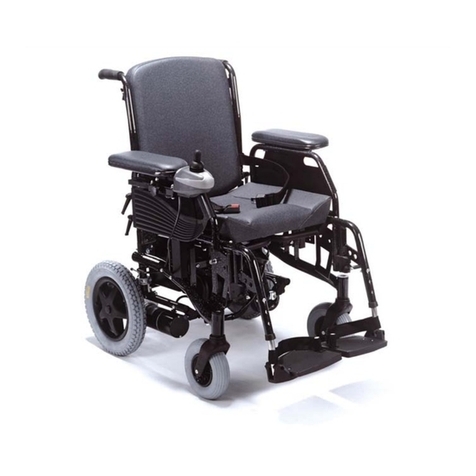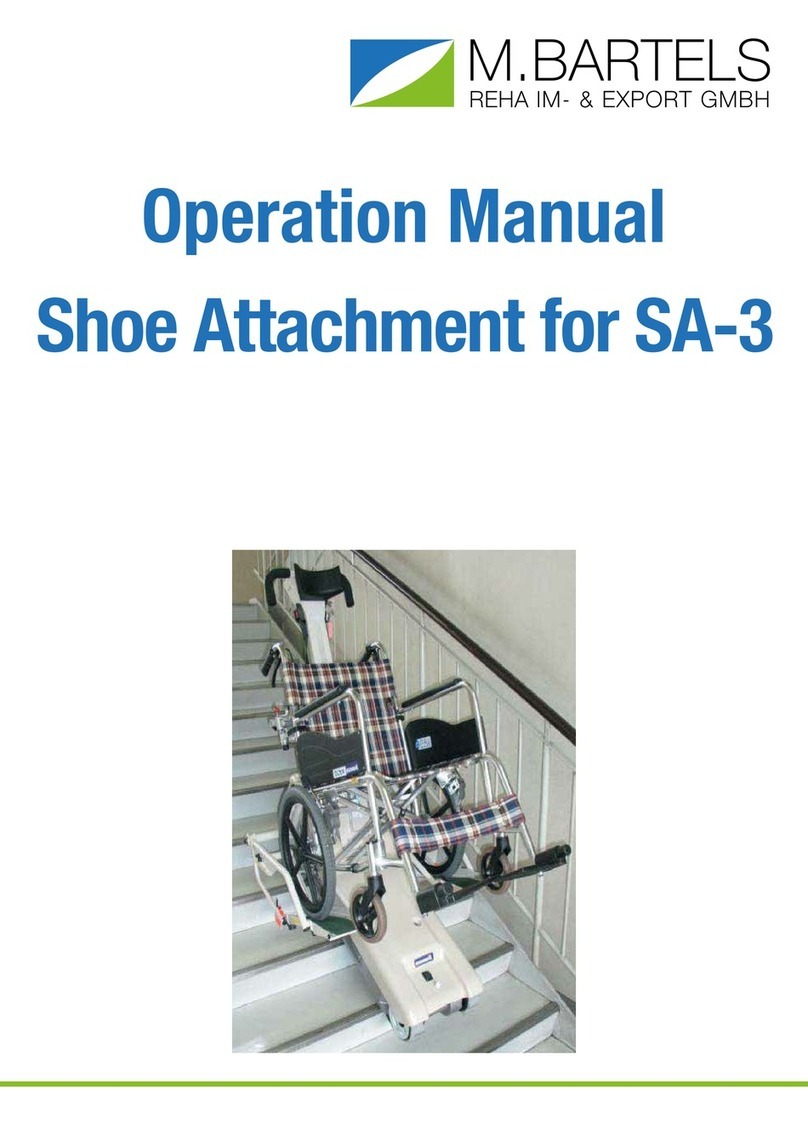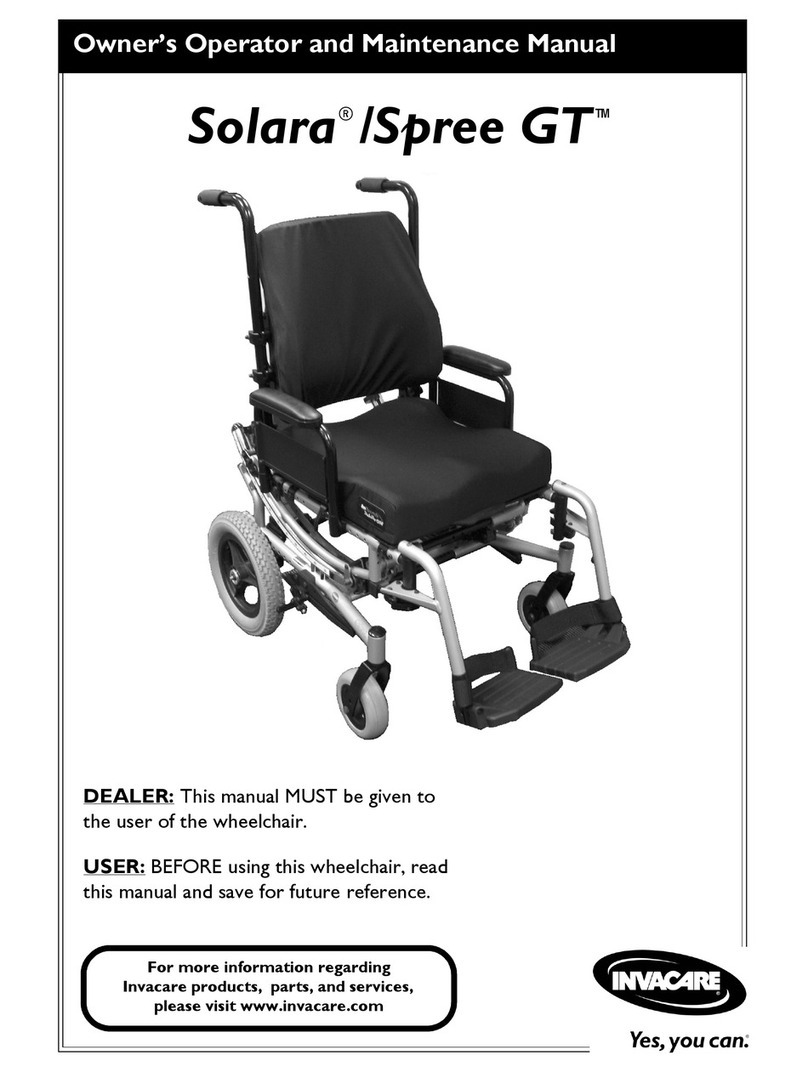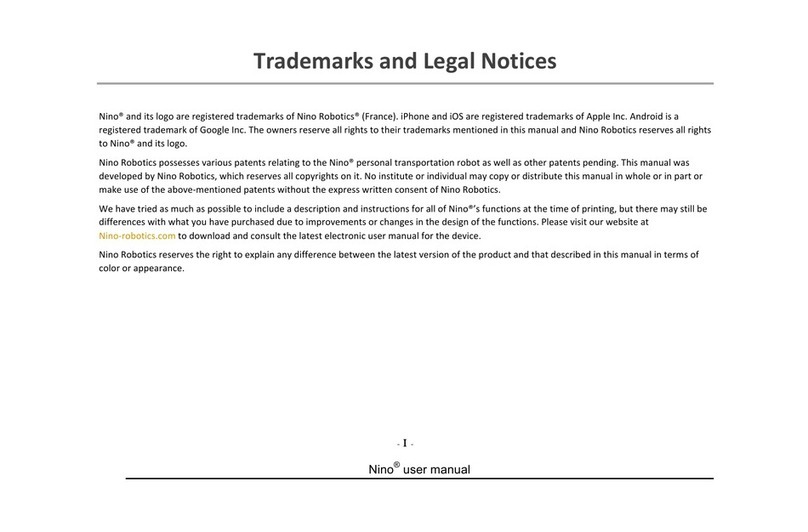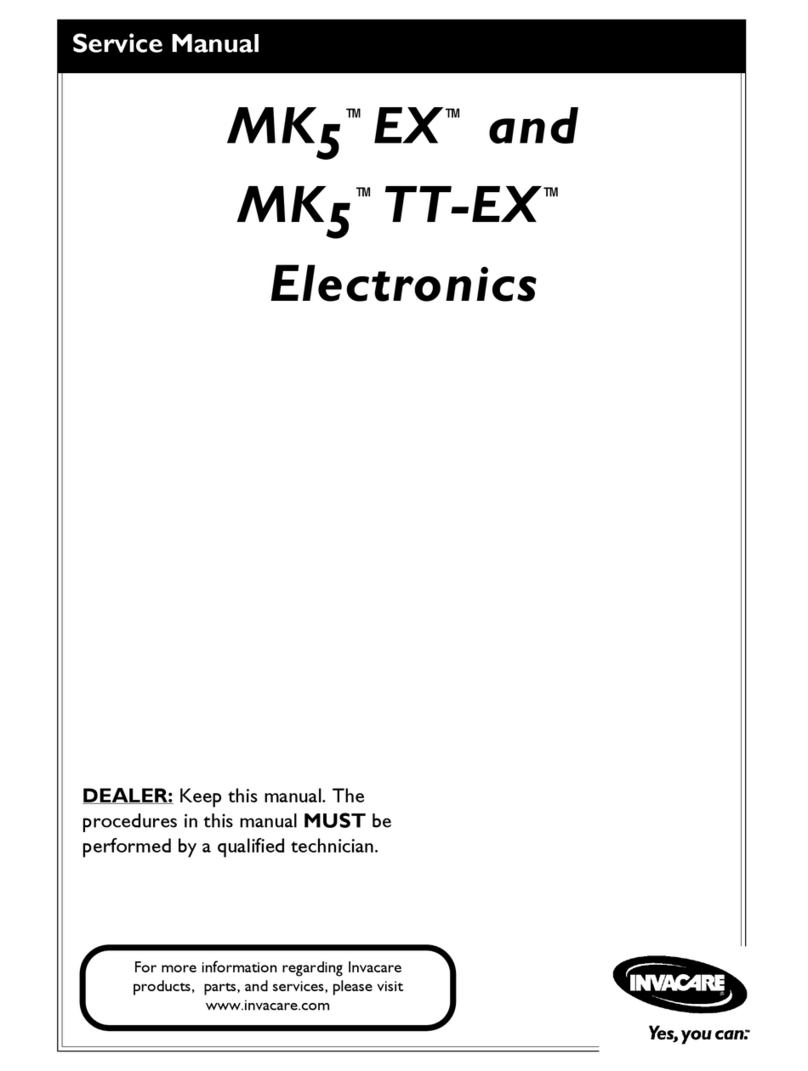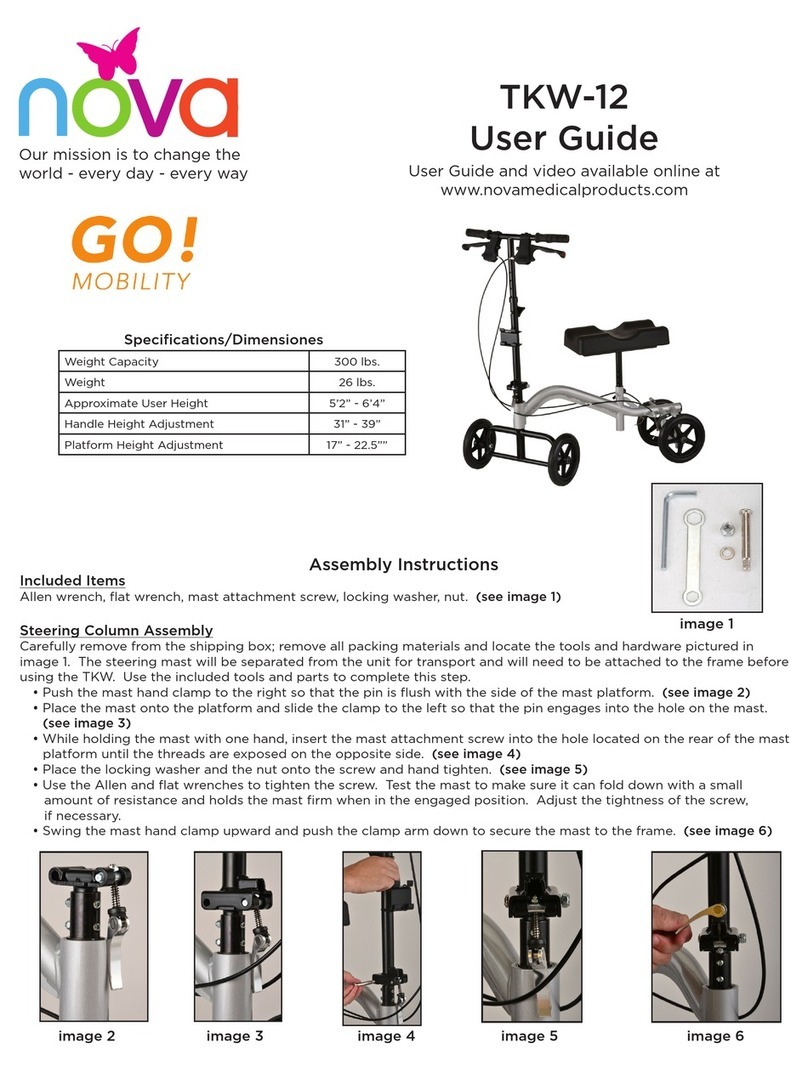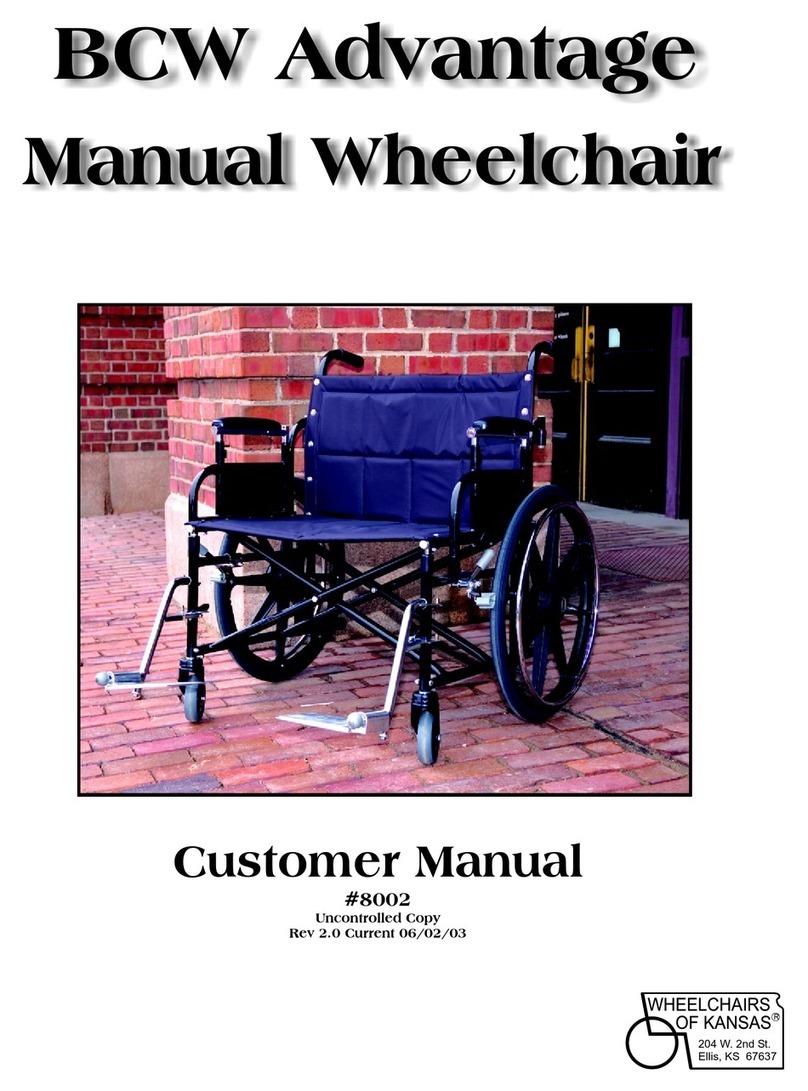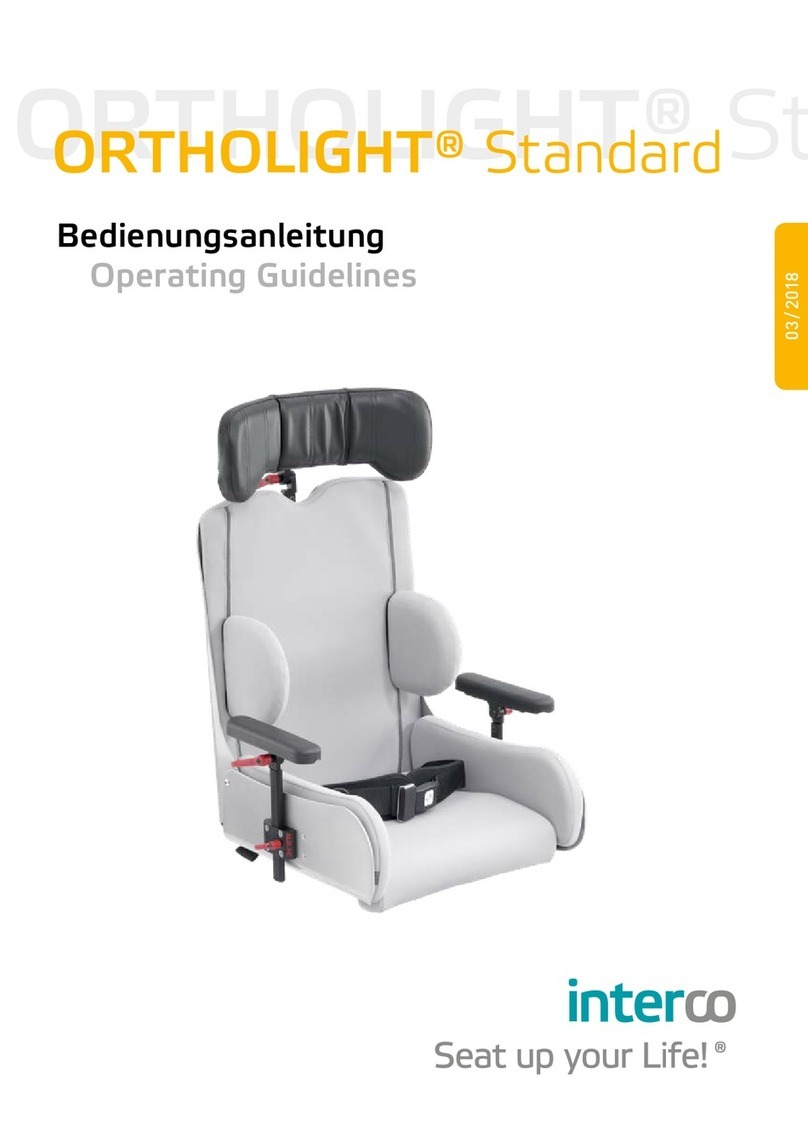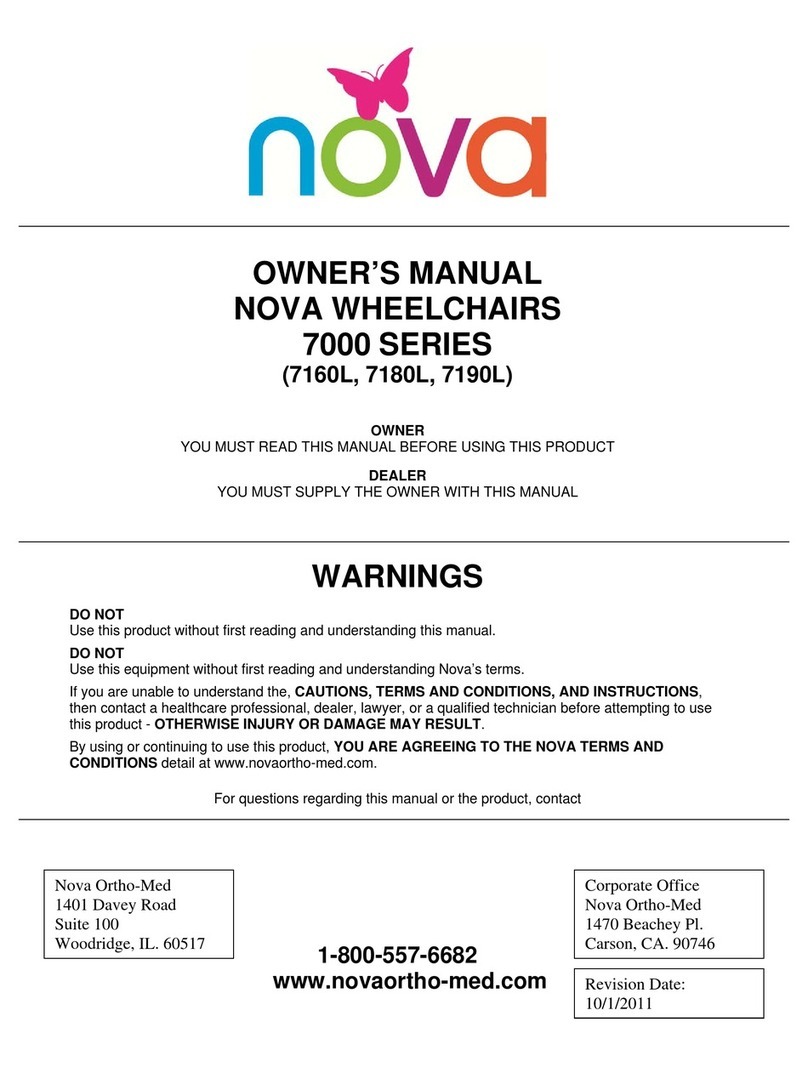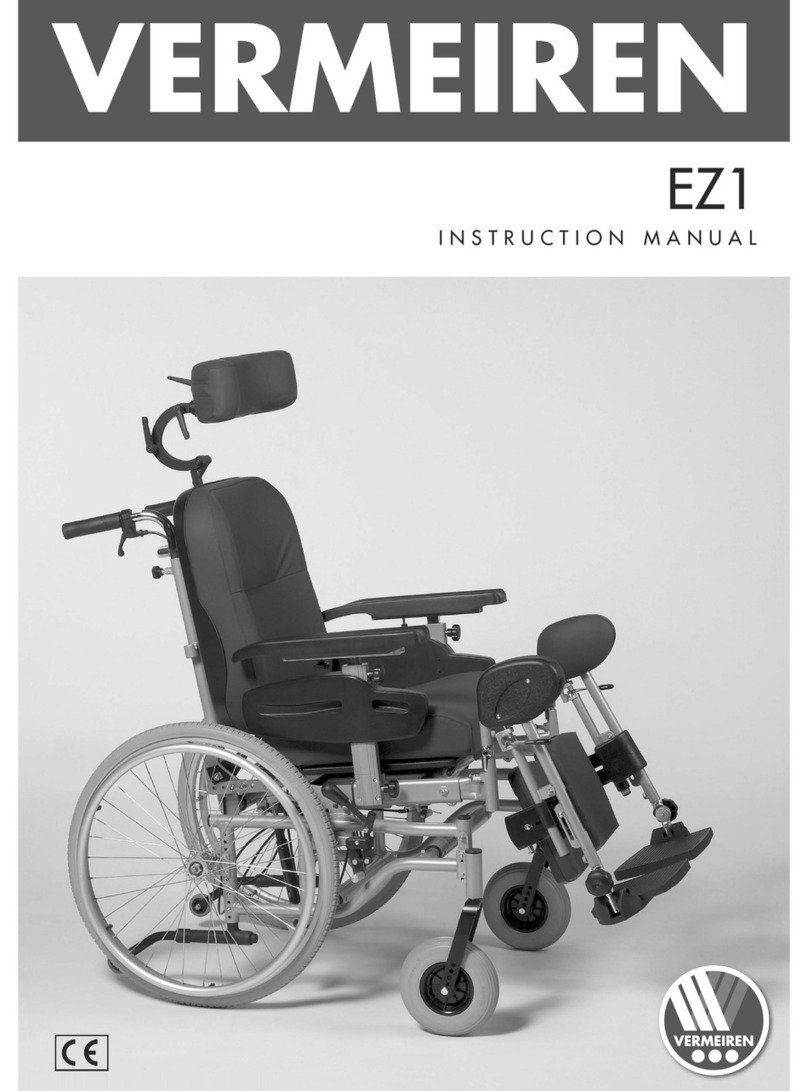
2
1. Parameters
To meet the requirements of a diverse range of disabilities and customer requirements, the Esprit offers a wide range of user parameters
that can be modified. Programming can be performed as described in chapter 2, directly using the control unit without an additional
device.
The following parameters are stored in the system, user mode, attendant control and Opti-Box. Changes to these parameters can be made
directly using the control unit (see chapter 2), please refer to the table in chapter 3 for the possible settings.
Only the authorised specialist dealer can make any of the settings, under no circumstances can the wheelchair user do
this themselves. Similarly, the programming key included with this delivery must not be given to the wheelchair user.
1.1 “System” menu
Brake applied
•A time delay until the electromagnetic parking brakes deploy once the last drive command (joystick deflection) has been issued.
•In the factory setting the brakes are applied after 30 seconds. Continuous braking is avoided which means there is no unwanted annoy-
ing “clicking” noise.
•Immediately: if you need to come to a safe stop immediately, for example when approaching slightly inclined kerbs/steps.
Automatic cut-off
•The time it takes until the Esprit automatically cuts off to protect the battery pack.
Menu function
•Option of completely deactivating the menu function, i.e. all the setting options for the end customer.
Specialist dealer access is preserved.
Joystick deflection
•Reduces the required deflection to reach the maximum speed from 100% to 80%, 60% and 40%.
Joystick axle change
Various settings to change the four directions of travel.
If the “axle change” parameter has been changed, the Esprit may only be operated using the bumper bar for the control
unit (item no. 1565836).
Set factory settings
•Resets all functions of the Esprit to the delivery condition upon leaving the factory.
•All customised settings are deleted and the language will need to be reselected.
1.2 “User mode” menu
The settings made in this menu affect the driving characteristics with which the wheelchair user controls the Esprit themselves.
Maximum speed forwards
Specifies the maximum achievable speed going forwards.
•We recommend reducing the speed for beginners or when the wheelchair is being used exclusively indoors.
•It is also sensible to reduce the speed for elderly users.
Maximum speed backwards
Specifies the maximum achievable speed going backwards.
•For safety reasons this is a maximum of 70% of the forwards speed.
•Reduction if travel needs to be very slow (e.g. for wheelchair users with poor coordination, elderly users or when travelling indoors).
